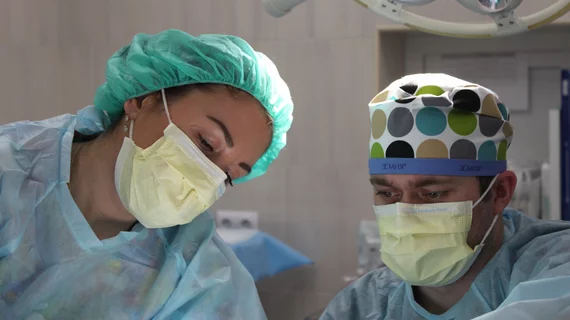Early catheter ablation superior to medication when treating ventricular tachycardia storm
Early catheter ablation (CA) outperforms medication alone when treating patients who present with ventricular tachycardia (VT) storm, according to new findings published in Circulation: Arrhythmia and Electrophysiology.[1]
“VT storm is a distinct arrhythmic emergency characterized by three or more episodes of sustained VT within 24 hours or incessant VT,” wrote first author Kaimin Huang, BSc, MBBS, with the department of cardiology at Westmead Hospital in Australia, and colleagues. “VT storm is often associated with recurrent implantable cardioverter defibrillator shocks, which may result in progressive deterioration in ventricular function and consequent heart failure and can also lead to substantial psychological morbidity and markedly impaired quality of life. VT storm can also lead to increased healthcare utilization from repeated hospital admissions and clinic visits.”
What is the best way initial treatment for VT storm? Right now, medical therapy with antiarrhythmic drugs (AADs) is the current standard of care, previous studies have suggested CA in the electrophysiology (EP) lab may be a more effective option. To examine that possibility, the group examined data from 129 consecutive patients who presented with their first episode of VT storm from January 2014 to April 2020 at a single facility in Australia. While 71 patients were initially treated with AADs, the other 58 patients were treated with early CA. Among the patients given AADs, the mean age was 62 years old and 60% were men. Among the early CA patients, the mean age was 65 years old and 56% were women.
After 12 months, ventricular arrhythmia-free survival was seen in 66% of early CA patients and 35% of the AAD patients. At the end of the study’s full follow-up period, which was a median of 702 days, ventricular arrhythmia-free survival was seen in 57% of the early CA patients, but just 8% of the AAD patients. VT storm-free survival and survival free from recurrent hospitalizations were also much higher among patients in the early CA group. In addition, the composite endpoint of death, heart transplant, VT storm recurrence and VT-related hospitalization was also much less likely among early CA patients (47%) than AAD patients (89%).
Another key takeaway from the group’s analysis was that the early use of CA appears to keep these patients out of the hospital. Early CA was associated with a median of 0.5 cumulative days in the hospital after the study’s follow-up period compared to a median of 18 cumulative days in the hospital for patients given AADs.
Huang et al. did note that more research is still necessary before full recommendations can be made.
“A randomized trial is needed to confirm our findings,” the group wrote.
A similar late-breaking study at the AHA 2022 annual meeting found catheter ablation was a better option than antiarrhythmic drugs in patients with atrial fibrillation (AFib). Read more.

